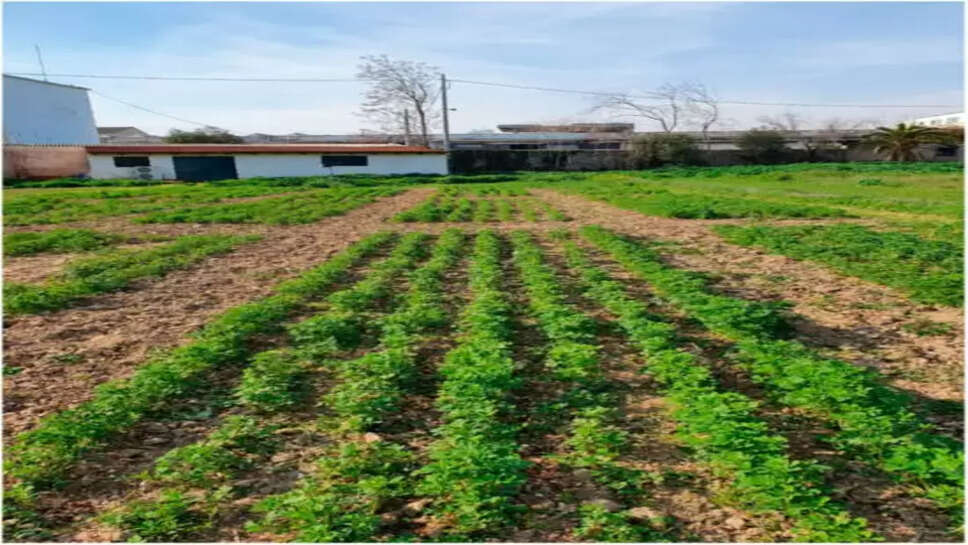Agriculture Remains a Hurdle, Yet Bilateral Trade in Sector Flourishes

In recent months, the growing momentum in India-US bilateral relations has faced a familiar yet persistent obstacle—agriculture. Negotiators on both sides have found themselves repeatedly grappling with complex issues related to agricultural tariffs, subsidies, and market access. Despite this stumbling block, data from recent quarters reveals a surprising twist: trade in the agricultural sector between the two nations has experienced a significant surge, signaling a decoupling of diplomatic deadlock from market dynamics.
This paradox—of political impasse and commercial growth—underscores the complexities of international trade and the resilience of market forces, especially in sectors as fundamental as food and agriculture.
Diplomatic Differences Over Farm Subsidies and Tariffs
At the core of the negotiations lie disagreements over agricultural subsidies and import duties. The United States has long criticized India’s support for its farmers, especially the minimum support prices (MSP) provided for crops like rice and wheat. From Washington’s perspective, these subsidies distort global prices and reduce competitiveness for American farmers.
On the other hand, India has pushed back strongly against such claims. Indian officials argue that their subsidies are vital for food security and rural livelihoods in a country where more than 50% of the population depends directly or indirectly on agriculture. India also contends that the U.S. maintains its own elaborate support structures for its farmers through crop insurance, direct payments, and price supports.
Tariff barriers are another contentious issue. The U.S. has sought lower tariffs on exports such as almonds, apples, pulses, and dairy products. India, however, maintains restrictions on certain agricultural imports due to sanitary and phytosanitary concerns, religious sensitivities, and its commitment to protecting small and marginal farmers from cheap imports.
Trade Surge: Market Forces Outpace Political Will
Yet, despite the friction, trade figures paint a different picture. Agricultural trade between India and the United States has seen a consistent upward trajectory over the past few years. According to recent estimates, bilateral agricultural trade crossed the $10 billion mark for the first time in 2024, a remarkable milestone considering the underlying tensions.
India has emerged as one of the largest buyers of American agricultural commodities like almonds, walnuts, cotton, and soybean oil. Almonds, in particular, have seen explosive growth, with India accounting for nearly one-third of U.S. almond exports. Similarly, Indian exports of spices, rice, and seafood to the U.S. have also seen significant upticks.
Several factors are driving this growth. Rising incomes and urbanization in India have increased demand for premium food products, including U.S. nuts, fruits, and packaged foods. Meanwhile, Indian products like basmati rice and organic spices are increasingly finding favor among health-conscious American consumers. The digitalization of trade processes, improved logistics, and bilateral investments in food processing are also enabling smoother transactions.
Private Sector Stepping In
Another reason for the surge in trade is the growing involvement of private enterprises and trade associations in bypassing diplomatic logjams. American agribusinesses have been quick to adapt to Indian regulations, modifying packaging, adhering to local norms, and entering into joint ventures with Indian distributors.
Likewise, Indian agricultural exporters are exploring certification programs and quality upgrades to meet stringent U.S. import standards. In sectors like dairy and seafood, companies are making substantial investments in infrastructure and compliance to expand their presence in the American market.
Additionally, industry associations like the U.S.-India Business Council (USIBC) and Federation of Indian Chambers of Commerce & Industry (FICCI) have been instrumental in facilitating dialogues, workshops, and trade shows aimed at bridging knowledge gaps and easing operational hurdles.
Digital Agriculture and Collaboration Opportunities
One of the brighter spots in the India-US agricultural relationship lies in technological collaboration. American companies and universities are partnering with Indian counterparts to improve crop productivity, water conservation, and supply chain efficiency through AI, drones, and precision farming tools.
India’s agritech sector has seen explosive growth, with startups working on farm-to-fork supply chains, real-time weather advisory systems, and digital marketplaces. These innovations are increasingly attracting American venture capital and technology partnerships, further tightening agricultural ties between the two countries.
Joint research programs and academic collaborations between Indian institutions like ICAR and U.S. universities are also helping develop sustainable agricultural practices, pest management techniques, and climate-resilient crop varieties.
Stalemate on Dairy and GMOs
However, not all sub-sectors are enjoying the same level of progress. Dairy remains a particularly difficult area, primarily due to India’s restrictions on bovine rennet and animal-feed-based practices in American dairy production. These limitations stem from religious and cultural sensitivities, making it politically unviable for Indian authorities to relax them.
Another sticking point is genetically modified organisms (GMOs). While the U.S. advocates for science-based approvals and wider access to genetically modified crops, India remains cautious, citing environmental and public health concerns. Approval processes for GM foods in India are notoriously slow, and opposition from various civil society groups remains strong.
What Lies Ahead: Negotiation vs. Normalization
Looking forward, experts suggest that while agricultural differences may continue to stall formal trade deals like a Free Trade Agreement (FTA), the normalization of business-to-business agricultural trade is likely to progress independently. There’s increasing consensus that instead of waiting for top-down agreements, a bottom-up, sector-led approach may be the way forward.
Strategic cooperation through mechanisms like the Trade Policy Forum (TPF) and Indo-Pacific Economic Framework (IPEF) might help address specific concerns gradually, rather than seeking an all-encompassing solution.
A Complex Yet Promising Future
The India-US agricultural relationship is a study in contrasts. On one hand, deeply entrenched policy disagreements over subsidies, tariffs, and regulatory frameworks continue to block the road to comprehensive trade agreements. On the other, real-world trade between the two countries is not only surviving but thriving, propelled by changing consumer preferences, corporate adaptability, and emerging technologies.
In this context, agriculture may be a stumbling block in official trade negotiations, but it is increasingly becoming a bridge in commercial and people-to-people relations. As long as businesses and consumers on both sides continue to find value in this exchange, the agricultural corridor between India and the U.S. is likely to grow—despite the bureaucratic gridlock that surrounds it.
